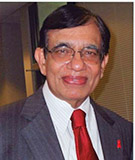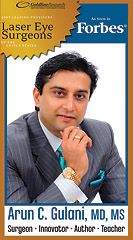
ACC 16: REPORTING FROM CHICAGO - PART II
The “Fantastic Voyage” of Interventional Cardiology

Remember the classic sci-fi movie “Fantastic Voyage,” the one where a submarine crew is shrunk to microscopic size so it can travel through the bloodstream of an injured scientist to repair his damaged brain? What if I tell you that similar feats are now being done on beating hearts by cardiologists? And that minimally invasive, through-the-skin methods can rule out the need for open heart surgery? Welcome news, right?
Such groundbreaking work was among the topics discussed in April during the American College of Cardiology convention in Chicago. Clearly technology is opening doors for better and more effective therapies.
Two valves in the heart often affected by disease are the aortic and mitral valves. The aortic valve can narrow as calcium deposits obstruct blood flow (aortic stenosis: AS), a common problem for elderly people. Until the new technology the only way to fix AS was to open the chest, remove the diseased valve, and replace it with a prosthetic valve under direct vision. That’s major surgery with its own risk of complications with a 1 to 3 percent mortality. Leaky mitral valves (mitral regurgitation: MR) from multiple causes also occur frequently in among adults.
Now, however, a minimally invasive surgical procedure that can replace the old damaged valve without opening the chest holds great promise. In an elegant technique called Transcatheter Aortic Valve Replacement (TAVR), an artificial valve is mounted on a catheter, inserted into the femoral artery in the leg, guided into the aorta, and wedged into the diseased aortic valve.
Several studies conducted in Europe and the United States were presented during the 2016 American College of Cardiology Scientific Sessions. The studies have all shown that the outcomes from TAVR versus standard open-heart surgery for valve replacement were at least comparable if not better for TAVR.
Two such valves are already on the U.S. market: the Sapien 3 (Edwards LifeSciences) and the Corevalve Evolut (Medtronic Inc). Several others such as the Lotus valve (Boston Scientific) are available in Europe and entering clinical trials in the United States. While historical trials demonstrated that percutaneous valve replacement can achieve optimal results without the risk of complications or death typically associated with valve replacement surgery in high surgical-risk patients, more recent studies have found similar benefit in intermediate-risk patients as well.
“Oh, TAVR is becoming popular now,” said Dr. Vineet Venugopal, a cardiologist associated with JFK Medical Center in West Palm Beach. “Here at JFK, we have done almost 375 patients with AS in the last three years, mostly in the older population who are not candidates for open heart surgery. For otherwise healthy and not so old, surgery is still the preferred method at this time. It’s the gold standard.”
That may change soon, though. During an evening symposium at the convention, Cleveland Clinic interventional cardiologist Dr. Samir Kapadia said, “The technique and technology are evolving very rapidly. We are in the process of studying how to apply this technology for younger and healthier patients with AS.”
Another important aspect of this emerging treatment is speedy recovery after the procedure. The length of stay can be cut down to three days or less, which means significantly lower costs.
The more complicated mitral valve requires a different approach. The common mitral regurgitation (MR) disorder results from a wider opening of the valve that allows the blood to leak backwards from the left ventricle to left atrium, which leads to heart failure.
There are two types of MR. “Degenerative MR” occurs when there are myxomatous changes in the valves, and “functional MR” from cardiac muscle damage or dilatation of the mitral ring (annulus) as a result of cardiomyopathy. Using a newly introduced technique called MitraClip (Abbott Vascular), two of the mitral valve leaflets (anterior and posterior) can be clipped together to reduce the size of the opening and decrease the degree of leakage. The procedure now is primarily used for the degenerative type of MR.
The MitraClip repair – a complex technique requiring intensive training and expertise – is yet another technological breakthrough. It’s used only for those at high risk for open heart surgery. In the preoperative assessment to select the right patients for these special procedures, elegant new techniques for noninvasive imaging of the valves that use three- and four-dimensional transesophageal echo, are now available.
It is important to recognize that these minimally invasive transcatheter techniques are not meant to replace the well-established and safe surgical techniques at this time. However, as our understanding of these techniques improve and better valves become available, there’s a good chance TAVR may become the standard of care for aortic stenosis in view of the high prevalence of population at risk. As such cutting-edge techniques and technologies continue to roll out, the promise of improved quality and quantity of life for cardiac patients has never been brighter.
M.P. Ravindra Nathan, M.D., is a cardiologist and Emeritus Editor of AAPI Journal. His book “Stories from My Heart” was recently released. (www.amazon.com or www.bn.com).
EYE CARE
Sjogren’s Syndrome: Not a Candidate, not Anymore!

With the completion of Sjögren’s Awareness Month, I recently addressed a focus group meeting at the American Academy conference on treating these patients’ dry eyes and, in many cases, offering them the possibility to safely and effectively become candidates for vision corrective surgery to see without glasses and contact lenses.
Sjögren’s (“SHOW-grins”) is a systemic autoimmune disease that affects the entire body. Along with symptoms of extensive dryness of the eyes, other associated symptoms could include fatigue, chronic pain, major organ involvement, neuropathies and lymphomas. It is estimated that around four million Americans are living with this disease and nine out of 10 patients are women with an average age of onset in the late 40s. However, Sjögren’s can occur in all age groups, even in children.
Most of these patients present to eye doctors with symptoms of dryness and also in many cases being turned away by Lasik centers as “Not a Candidate” for vision without glasses.
With new generation treatment and diagnostic modalities for dry eyes, including for cases like Sjogren’s, this indeed can become a possibility.
I like to approach such patients as previously described in my article (KhaasBaat) on dry eyes to first determine the exact nature of dry eyes and delineate the cause among four basic variants right from aqueous deficient to combination pathologies. Once the diagnosis is determined, then attack the dry eyes with that effective treatment regimen directed to not only that cause but also improve overall tear film layer and ocular surface.
Our tear film is actually about 7 microns thick and is made up of three layers:
-
The Innermost, Mucin Layer (produced by the Conjunctival Goblet cells on the surface of the eye) and this layer makes the tear film “stick” to the eyeball.
-
The Middle, Aqueous Layer (produced by the Lacrimal glands, which are located on the upper and outer side of your eye socket). This is the real tear film if you may and contains all of the chemicals and nutrients that are needed for the ocular health and safety.
-
The Outermost, Lipid layer (produced by the Meibomian glands, which are arranged along the eyelid margins vertically in rows like “tooth paste tubes” with their “mouths” opening at the lid margin close to the eye lashes). This layer actually provides surface tension to the tear film and hence maintains its vertical distribution on the eye despite gravity and also decreases evaporation of your tear film.
Despite a detailed analytical system for dry eye diagnosis and management (Gulani Matrix), essentially dry eyes can be broken down into two basic kinds (and, of course, various permutations and combinations):
I. Quantitative (decreased quantity)
1. Decreased production
2. Increased Loss.
II. Qualitative (decreased quality/altered chemical content of either one or all three layers despite good quantity)
I like to breakdown the treatment protocol into 3 levels:
-
Local
a. Medical (specific artificial tears/ medicated eye drops)
b. Procedures (Lacrimal plugs/Meibomian gland probing/LipiFlow)
-
Systemic (oral medications/diet/environment modification)
-
Accessories (Moisture chamber goggles/sleep masks).
In cases such as Sjogren’s, one can work with the patient’s rheumatologist and internist to also achieve systemic stability.
Once the above is achieved, then the ART of Vision corrective surgery can be applied not only as surface laser techniques like SMILE or Laser ASA over LASIK but also, in many cases, the ocular surface could be avoided completely by correcting the patient’s spectacle prescription surgically from inside the eye.
My approach in designing their vision looks at their age and ocular status so for young patients (not cataract age yet), one can offer Refractive Lens exchange surgery (exchanging patient’s natural lens for an artificial lens implant)
Or
with ICL technology (a miniature contact lens is placed in the eye).
If patient is in the cataract age group, then use cataract surgery as an avenue to correct vision without glasses using new generation lens implants like Multifocal/Progressive/Accommodative lenses. Even such patients with Keratoconus and high astigmatism can undergo INTACS (microsegments in the cornea) surgery.
If we think about it, there can be nothing more uncomfortable for Sjogren’s patients than having to wear contact lenses, especially if they have high refractive errors (glasses prescriptions) where glasses are not as helpful. In many such cases, we can now offer them modalities for vision corrective surgeries to lead a life of visual freedom.
Arun C. Gulani, M.D., M.S., is director and chief surgeon of Gulani Vision Institute in Jacksonville. He can be reached at [email protected] or visit www.gulanivision.com